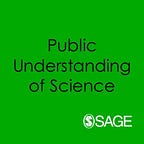A Sonnet to Science. Scientists and their Poetry
Review by Iggy McGovern
Sam Illingworth’s book is a comprehensive work, sensitive to both the sciences and the poetries, and is of itself an exemplar of the importance of science communication.
On the front cover, A Sonnet to Science is described as ‘Six beautifully wrought biographies’, an excerpt from a recommendation that continues on the rear with ‘finding humour, lyricism and humanity in the lives of six scientist-poets’. It would be difficult to disagree with any of that. Sam Illingworth writes with clarity and with style, as befits a Senior Lecturer in Science Communication who is also a scientist and a poet.
Here the reader will meet (in chronological order) the chemist Humphry Davy, the proto-programmer Ada Lovelace, the physicist James Clerk Maxwell, the medical researcher Ronald Ross, the immunologist Miroslav Holub, the astronomer Rebecca Elson; and they all wrote poetry. But Illingworth aims at more than biography; at the close of his introduction he states: “By presenting the poetic accomplishments of these scientists alongside their life histories and scientific achievements I hope that I am able to provide a tentative explanation as to why these scientists wrote poetry, and how their individual stylings and reasons for writing verse might have concurred. In doing so I hope to demonstrate that the two disciplines offer complementary, rather than antagonistic, viewpoints for understanding the world and the way in which we live.”
I find a curious disconnect between these two sentences. I can applaud the latter aspiration that the two disciplines offer complementary, rather than antagonistic, viewpoints but I am less convinced that the examination of six scientist-poets’ individual stylings and reasons for writing verse (of intrinsic interest, of course) is much more than a refutation of the statement that NO scientist writes poetry. Given the slippery nature of poetry, should one really expect to see any pattern emerging, no more than through an examination of any other profession, viz. lawyer, clergy, politician?
Nevertheless, the six biographies here provide much food for thought, both individual and comparative. Not only are they differentiated in their specific sciences, and indeed in the extent of their contributions, but they also cover a wide range of personal and political circumstances, across three centuries.
Humphrey Davy belongs to an era where arguably the strains between science and poetry first appear, the effect of the combined pressure of Romanticism and Industrialisation. Davy’s friendship with Wordsworth and Coleridge was a significant channel of mutual understanding that may have slowed the pace of fracture.
Davy’s friendship with Lord Byron (who featured Davy in Don Juan) provides a link to the next subject, Ada Lovelace, Byron’s daughter; the latter’s interest in poetry might as likely derive from her famous father-in-exile as from her work on Babbage’s Calculating Machine. Lovelace’s final poem, ‘Rainbow’, sits uncomfortably with her earlier desire to understand why the rainbow forms an arc and other details; if she had ever come to that understanding, it finds no expression in the poem.
James Clerk Maxwell at first sight provides a counter-example. Many of his poems are liberally spiced with scientific language, but with end-rhymes like platinum/flatten him, and the goodly company of the Red Lion Club, they are revealed as satires; these are particularly directed at fellow-scientist (and science communicator!) John Tyndall, whose materialism was anathema to the religious Maxwell.
Of all the sciences medicine perhaps comes closest to the humanism of poetry. Combined with service in the British Raj, Ronald Ross wrote poems reflecting on life in an alien culture and on his success in advancing the understanding of the role of the mosquito in malaria transmission; the latter gained him the Nobel Prize in Physiology, an award that was mired in controversy.
Of the group, Miroslav Holub has produced by far the largest body of poetry, and has gained an international readership. Many of the poems reflect his professional science, but the stronger influence is pushback against the communist regime in his native Czechoslovakia. Holub also wrote about science-poetry issues, notably in his essay collection, The Dimension of the Present Moment published by Faber.
Lastly, the scientific and poetic careers of Rebecca Elson were foreshortened by ill-health. Astronomy has always had a special place in poetry, and her melding of science and poetry promised much, not least in examining both these structures through the lens of feminism.
But my synopses above are no substitute for the detail that is to be found in Sam Illingworth’s fine book. It is a comprehensive work, sensitive to both the sciences and the poetries, and is of itself an exemplar of the importance of science communication.
Iggy McGovern is Fellow Emeritus in Physics at Trinity College, Dublin. His most recent collection of poetry is The Eyes of Isaac Newton (Dedalus Press, 2017).
